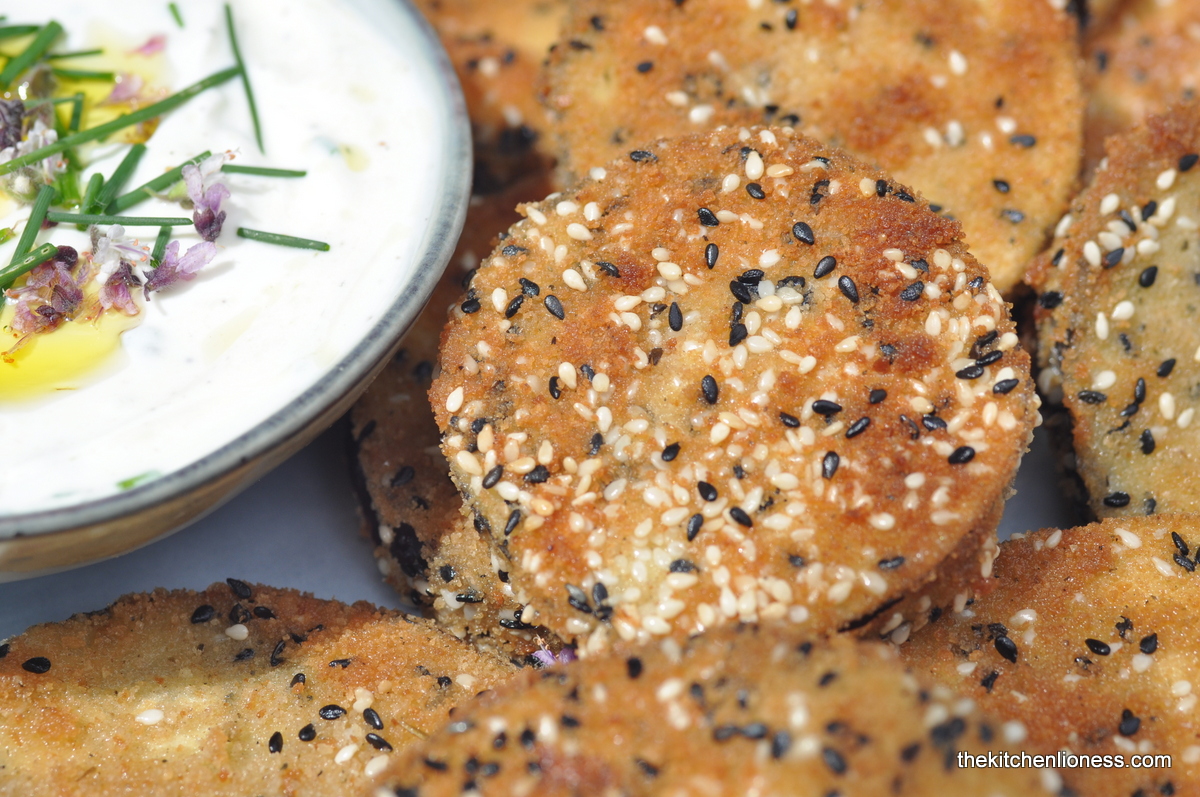It gets its very agreeable savory flavor from the onions and the addition of sliced scallions and its gorgeous golden color from turmeric. As I noted in the recipe below, if the taste of tumeric isn't your thing, feel free to use saffron instead. And if zucchini aren't available, you can easily use three medium eggplants (aubergines) instead.
Kuku tastes equally good served warm or at room temperature, topped with a little yogurt or crème fraîche. It also makes perfect summertime picnic fare. You can cut it into fingers, squares or pie slices. You can bake it in a springform pan (which is what I like to do for ease of un-molding) but you can also bake it in a cast iron skillet, or your favorite pie dish and bring the whole thing to a party. Easy. Uncomplicated. Utterly delicious.
Summertime Zucchini (Courgette) and Herb Kuku
(recipe inspired by Little Book of Jewish Appetizers, by Leah Koenig)
Ingredients
- vegetable oil (I like to use sunflower or olive oil suitable for cooking)
- 2 onions, (M), halved and thinly sliced
- sea salt and freshly ground black pepper
- 2 to 3 zucchinis (courgettes), 250g (about ½ pound), cut into batons ( 2.5cm or 1in) - you might want to use a mix of green, white and yellow zucchini/summer squash or use only one color)
- 2 scallions, thinly sliced
- 2 garlic cloves, minced
- 7 eggs (L), free-range or organic (eggs marked 'L' in Germany weigh between 63g and 73g each)
- 2 tbsp AP (plain) flour
- 1 tsp baking powder
- ½ a bunch (½ cup) chopped fresh, Italian (flat leaf) parsley
- ½ a bunch (½ cup) chopped fresh dill
- 2 tbsp chopped fresh oregano
- 1 tsp ground turmeric (if tumeric isn't your thing, you can use 1½ tsp saffron strands, dissolved in 1 tbsp of hot water)
- ¼ tsp red pepper flakes
- 200g (1½ cup) crumbled feta (I used locally produced goat's cheese)
Preparation
- Brush a 23 cm (9inch) springform cake pan with vegetable oil.
- Line the pan with baking parchment - cut out a circle of parchment for the bottom and a long strip to wrap around the sides, then brush the parchment with oil. Set aside.
- Heat some oil in a large sauté pan over medium heat, add onions, season with a little salt and cook, stirring occasionally, until softened and lightly browned, about 10 minutes.
- Add the zucchini and squash batons and continue cooking, stirring occasionally, until zucchini softens and browns in spots, 8 to10 minutes. At the end of the cooking time add the sliced scallions and chopped garlic and sauté for a further 1 to 2 minutes, just until the garlic is fragrant and the scallions are translucent. Set aside to cool slightly.
- Preheat the oven to 190°C (375°F) degrees.
- In a large bowl, whisk together the eggs, flour, baking powder, parsley, dill, oregano, garlic, turmeric, red pepper flakes, ½ teaspoon salt, and a generous amount of freshly ground black pepper.
- Fold in the zucchini mixture and feta.
- Pour into the prepared baking pan and bake until golden brown and cooked through, 30 to 40 minutes.
- Set aside to cool on a rack for about 15 minutes.
- Carefully remove the sides of your springform pan and slice into wedges or squares.
- Serve warm or at room temperature.
Kukus are traditionally made on the stovetop, but this oven version is much easier. A fresh herb kuku such as this one is a traditional New Year's dish in Iran. The green herbs symbolize rebirth, and the eggs, fertility and happiness for the year to come. But we like this in summertime, as a light lunch or appetizer - if time permits, I serve this with a lovely side of Fattoush or Tabbouleh salad.











































